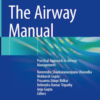Necrotizing Pancreatitis: ED Presentation, Evaluation, and Management
emdocs.netA 40 year-old patient presents with increasing abdominal pain and a new fever. She initially presented to the Emergency Department five days prior for upper abdominal pain. The initial workup showed stable vital signs, mildly elevated lipase, and an unremarkable right upper quadrant ultrasound. The patient was diagnosed with gastroenteritis and discharged home with primary care follow up. She now returns to the Emergency Department five days later with increased abdominal pain and feeling overall unwell.
Although few cases of pancreatitis result in necrotizing consequences, this sequela should be suspected when abdominal pain does not resolve, pancreatic enzymes are increasing, signs of sepsis with or without organ dysfunction, and/or unexplained fever. Signs of sepsis includes systemic inflammatory response syndrome (SIRS) criteria of temperature <36°C or >38°C, heart rate >90 beats per minute, respiratory rate > 20 breaths per minute, leukocytosis or leukopenia.
On imaging, suspect necrosis if a non-enhancing area within the pancreas is visualized. Furthermore, the necrotic region is considered infected when there are fluid collections with gas present and confirmed with collection aspiration. It is important to have a high suspicion for infected necrotizing pancreatitis, as this is associated with increased mortality.
When clinical and lab findings support the diagnosis of pancreatitis, the initial emergency department evaluation should include abdominal ultrasound to evaluate for etiology such as biliary disease. However, alternative imaging by CT or MRI should be considered when the lipase is normal, other lab abnormalities are present, SIRS criteria are met, and/or the symptoms have been present for greater than 48 hours.
The patient was admitted for fluid resuscitation, analgesia and further supportive care. Enteral nutrition was restarted once the abdominal pain began to subside. She was given discharge instructions for dietary and lifestyle changes to decrease her risk of further pancreatic irritation, such as stopping alcohol intake and manage her cholesterol. She has a follow up appointment with interventional radiology in four weeks to determine if percutaneous drainage is required.

















